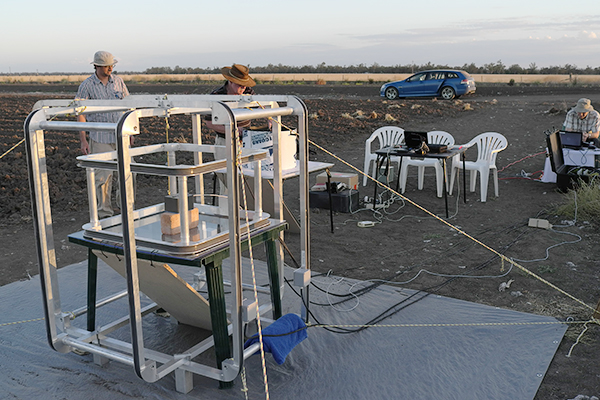New research takes flight
June 22, 2018
Share
![[Preparing a bogong moth for recording from brain]](/gazette/sites/gazettewww/files/assets/WEB%20preparing%20moth%20for%20recording%20from%20brain.jpg)
Queen’s University researcher Barrie Frost and his research collaborators have uncovered the first reliable evidence that some nocturnal insects use the Earth’s magnetic field to navigate during migration.
Each spring, millions of nocturnal Bogong moths (Agrotis infusa) hatch across breeding grounds throughout southeastern Australia before flying over 1,000 kilometres through the dark night to reach a limited number of high altitude caves in the Australian Alps. After a few months of summer dormancy in those cool mountain caves, the moths fly right back to the breeding grounds where they were born.
“When we began this study, we were convinced that the Bogong moth would exclusively use celestial cues in the sky, such as the stars and the moon, for navigation during migration,” says Dr. Frost, Director of the Visual and Auditory Neuroscience Lab at Queen’s. “This, it turned out, is not the case. We were very surprised when we discovered that these moths could sense the Earth’s magnetic field just like migratory birds.”
For this project, Dr. Frost created an upgraded, computerized flight simulator specifically designed for moths. He used Google Earth to create an accurate moving image of the ground the moths are flying over. When the moth is flying in the simulator, the ground is programmed to always move backward, no matter what direction they choose, which encourages them to keep flying.

To safely suspend the moth in the simulator, the researchers glued a small sensor, called a stalk, to their back, wired the stalk to a computer and then suspended them in the flight simulator using wires. Computers tracked their direction of travel.
Using this simulator, they found the moths’ flight direction turned predictably when dominant visual landmarks and a natural Earth-strength magnetic field were turned together. When those two cues were turned in conflicting ways, the moths became disoriented within minutes. The findings led the researchers to conclude that Bogong moths rely on a magnetic sense.
“This is essentially the same strategy we use when hiking in wilderness terrain: we determine our direction with a compass and then look for some distant landmark in roughly the same direction—for instance a mountaintop or a distant tree—and then head for this as we walk,” says Dr. Frost. “When this landmark is no longer reliable, we again check our direction with the compass and choose a new landmark to orient towards.”
The researchers say they would now like to dissect, in more detail, which visual and magnetic cues the moths use and how they are integrated in the brain. Due to the moths’ relatively simple nervous system, they also hope to learn how the insects detect magnetic information, something that has yet to be achieved in any animal.
The research appeared as the lead article in Current Biology and a photo of the Bogong moth appeared on the cover. The Gazette originally reported on Dr. Frost designing the simulator in 2015.